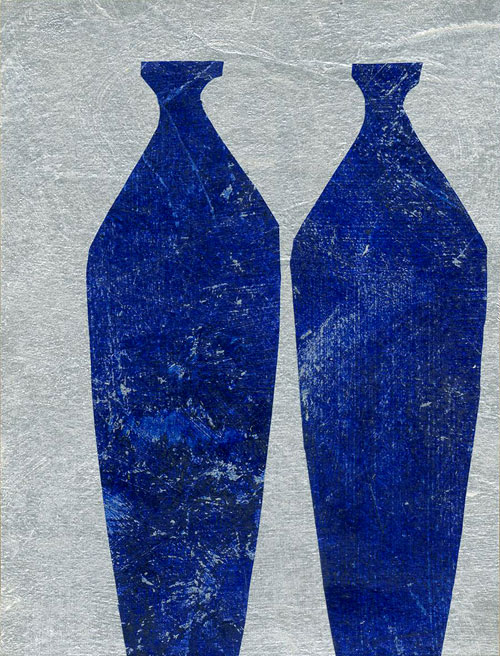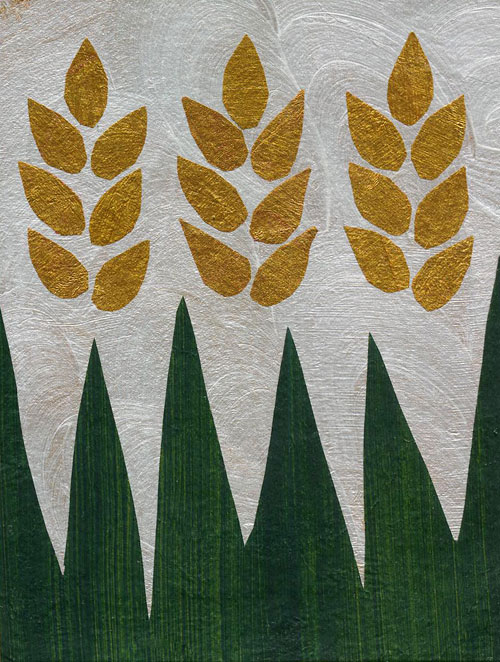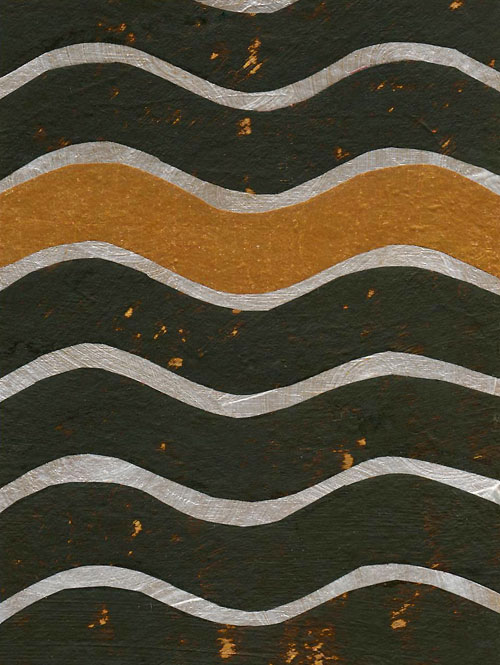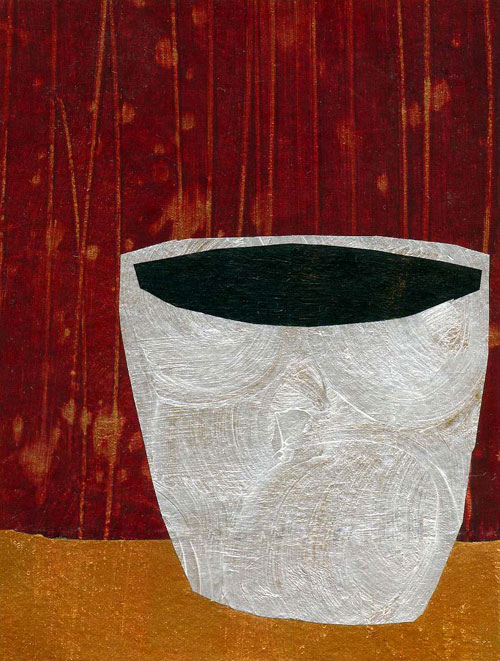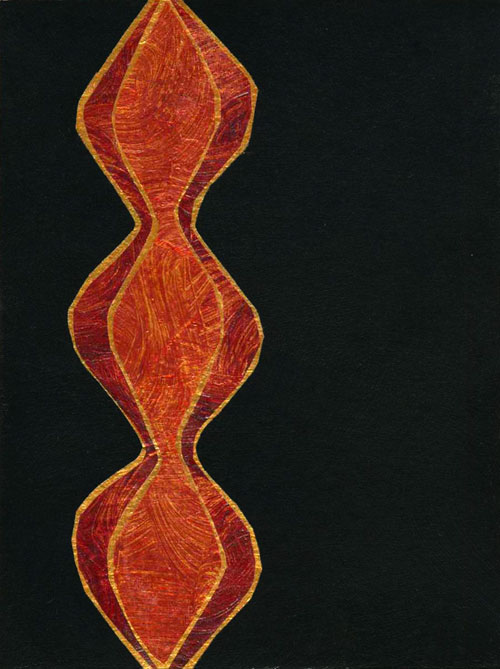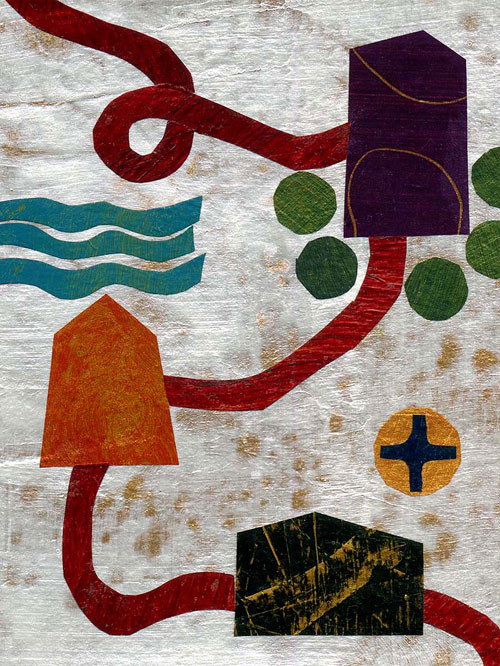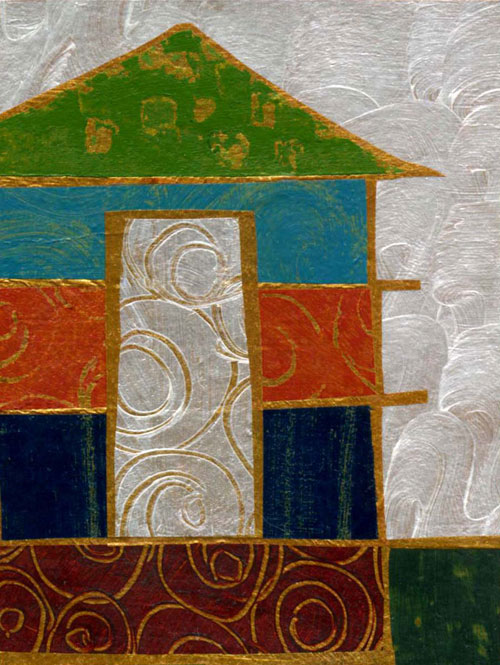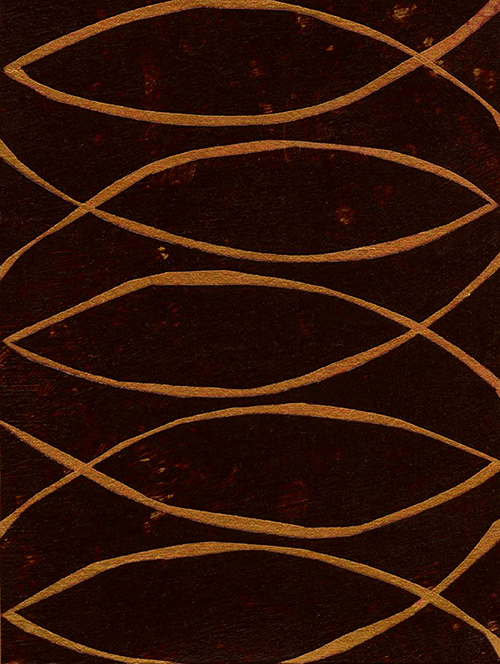 Image: A Gracious Plenty © Jan Richardson
Image: A Gracious Plenty © Jan Richardson
Reading from the Gospels, Year A, Proper 13/Ordinary 18/Pentecost +12: Matthew 14.13-21
Years ago, when I moved from a position as a pastor in a congregation into a creative ministry well off the beaten path, it stirred lots of questions. I was based at a retreat center outside Orlando, where I served as artist-in-residence. During my first few years there, many folks—most often my clergy colleagues—would ask me, “So are you still on that sabbatical?” Though my bishop had appointed me to this specialized ministry, in which I served full time, I realized that some folks thought I was taking a break from my vocation. The question occasionally grated, but I came to see that it contained opportunities to help stretch people’s ideas about where and how ministry takes place. I learned to love responding, “No, this is my real life!”
Eleven years since moving into the form of ministry to which I feel most called, I don’t get the sabbatical question these days, but I continue to be intimately acquainted with the ways that many folks perceive the arts and other creative work to be extraneous to who we are as the people of Christ. In some quarters, art is considered to be fluff, a luxury, a needless extravagance. Or art becomes a tepid, sanitized, watered-down endeavor that misses what an astounding thing it is that the first face we see of God in the scriptures—there, at the beginning of Genesis—is of God as creator, who labors with such artful passion, imbuing each creative gesture with a wild extravagance.
Because of lingering, centuries-old prejudices about art, I still find myself fielding questions about what it is that I do, and why I do it, and just how is it ministry, again? I’m glad to have those conversations. But especially with living in a place where the art-and-faith community is comparatively small (which describes any number of places, not just mine), I often feel like my call has led me into a pretty remote spot.
I’ve been paying attention to this sense of remoteness in pondering this Sunday’s gospel lection. Matthew offers his version of how Jesus, having just heard about the death of John the Baptist at a feast of a most gruesome sort, withdraws to a deserted place by himself. The crowds find him, however, and flock to him. He cures the sick among them. When the disciples remind Jesus that the hour is growing late, and that they are in a lonely, remote spot with no concession stands at hand, and that he needs to send the people into the villages to buy food, Jesus tells the disciples to feed the people themselves. By the time Jesus and the disciples leave this remote place, a miracle of feeding has occurred, with twelve baskets left over from what began as two fish and five loaves of bread.
Perhaps like most of us, I’m accustomed to often feeling like I’m in the position of the disciples, listening to Jesus tell me to do what I think I can’t do myself, in a place that seems more remote than I might like. Pondering the text this time around, I have found myself thinking, “Please, could I maybe, this time, think of myself as being among the crowds who were fed, and found nourishment in abundance, here in this isolated spot?”
I’m feeling that way because for the past few days, I’ve been in a remarkable place called The Grünewald Guild. Nestled among the Cascade Mountains in eastern Washington State, the Guild was founded more than twenty-five years ago as a retreat center devoted to exploring the connections between art and faith. For nine weeks each summer, as well as at other times of the year, the Guild offers classes in a variety of media. Most compelling for me is the way that our creative work takes place in a rhythm of community life, with morning and evening prayers, shared meals, presentations in the evening, and conversations in the in-between places. Those who come to the Guild may not necessarily identify themselves as artists in a vocational sense (or as Christians, either; it’s a community of hospitality to anyone who wants to come). But each person comes with some particular sense of the interplay between faith and art, along with the desire to explore that interplay in their own lives and in community. In the midst of a vocation that beckons me to do a lot of explaining, the Guild is a place where I am most in my element.
It is a miracle of feeding for body and soul.
Barely four days into my stay (I’m teaching this week and staying on next week to do some writing), I have received extraordinary gifts marked by synchronicity and grace. Friends who were here earlier in the summer left me a gift card for tea at the nearby hardware store/café. I enjoyed the tea yesterday in the company of a friend, who later sang to me several wondrous songs she had written here. Another friend gave me a folded paper structure that I can use as the basis for some of my work in the Soul of the Book class that I’m teaching. Some of the gifts, like this one, are very specific to this place, and it’s difficult to briefly describe them or the ways that they provide sustenance for someone whose vocation takes me to some pretty remote places in my inner terrain.
I don’t quite know how to take it all in, these gifts that appear like manna, like living bread. There is so much abundance. When I leave here in a dozen days, I am certain I will be trailing crumbs behind me. At least twelve baskets full. Sustenance enough for the path ahead.
What are you hungry for these days? How are you being fed? In the most deserted and remote places in your soul and in your community, how have you found, or long to find, sustenance?
May God meet your deepest hungers of body and soul with extravagance and grace. And may we know how to receive—and give—such feeding.
[To use the image “A Gracious Plenty,” please visit this page at janrichardsonimages.com. Your use of janrichardsonimages.com helps support the ministry of The Painted Prayerbook. Thank you!]
